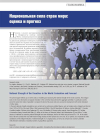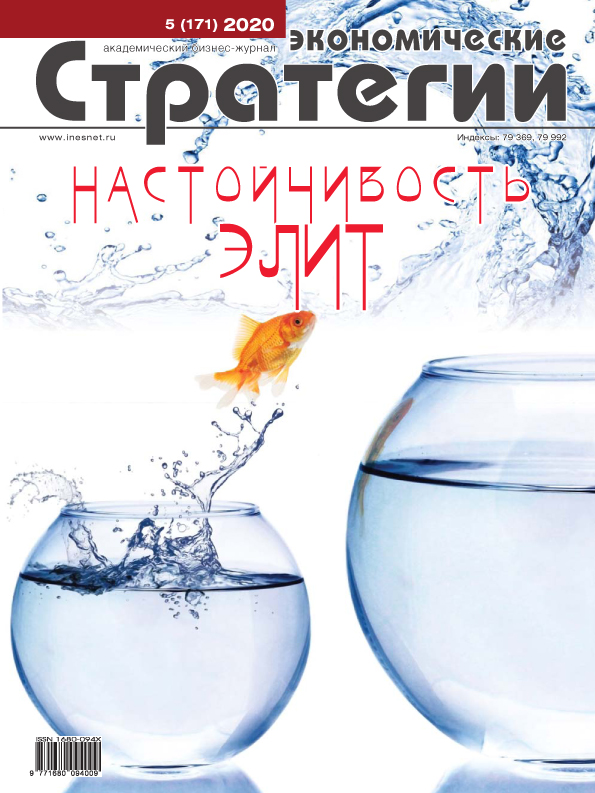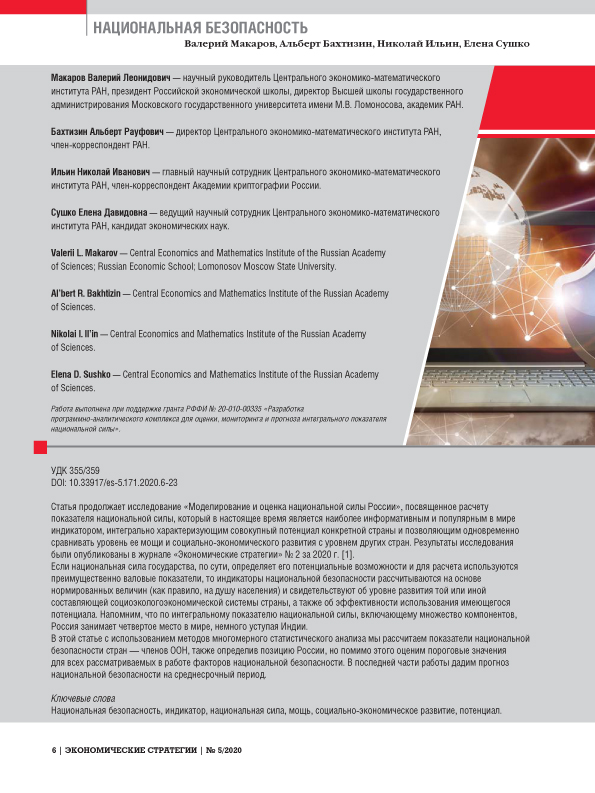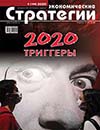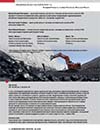National Strength of the Countries in the World: Evaluation and Forecast
DOI: https://doi.org/10.33917/es-6.186.2022.38-51
The present paper follows up an earlier study on modeling and assessing the national strength of the world countries. This integral index is the most informative and popular indicator in the world that characterizes the aggregate potential of a particular country and at the same time makes it possible to compare the level of its power and socio-economic development with similar indicators of other states.
In the past national strength calculations were carried out by well-known political figures, such as foreign policy strategist and director (from 1975 to 2013) of the main Office of Net Assessment (ONA) of the US Department of Defence, Andrew Marshall [1], founder of political realism, Nicholas John Spekeman [2], one of the leading US foreign policy experts, Hans Morgenthau [3], founder of neorealism theory Kenneth Neil Waltz [4], author of the theory of offensive realism John Mearsheimer [5] and others. To date, dozens of methods for assessing national strength have been developed, the first of which was put forward in 1741. In the article first of all we’ll consider the most well-known foreign results and then present our own ones. In our opinion, it is important to make calculations of the integral indicator of national strength on an ongoing basis, as well as to compare our country’s potential with alternative estimates of analytical centers of geopolitical opponents.
References:
1. Marshall A.W. A Program to Improve Analytic Methods related to Strategic Forces. Policy Sciences, 1982, no 15(1), pp. 47–50, DOI: https://doi.org/10.1007/BF00143367.
2. Spykman N.J. America’s Strategy in World Politics: The United States and the Balance of Power (1942; reprint, Hamden, CT: Archon Books, 1970).
3. Morgenthau H.J. Politics among Nations: The Struggle for Power and Peace, 2nd edition. New York: Alfred A. Knopf, 1954.
4. Waltz K.H. Theory of International Politics. Addison-Wesley Publishing Company, 1979.
5. Mearsheimer J.J. The Tragedy of Great Power Politics. N.Y., L., W.W. Norton & Company, 2001.
6. Correlates of War, available at: https://correlatesofwar.org.
7. Power. U.S. News & World Report, available at: https://www.usnews.com/news/best-countries/rankings/power.
8. Methodology: How the 2022 Best Countries Were Ranked. U.S. News & World Report, available at: https://www.usnews.com/news/best-countries/articles/methodology.
9. Most Powerful Countries 2022. World Population Review, available at: https://worldpopulationreview.com/country-rankings/most-powerful-countries.
10. About WPI. The World Power Index, available at: https://www.worldpowerindex.com/about-world-power-index/
11. Past Years. Lowy Institute Asia Power Index, available at: https://power.lowyinstitute.org/data/power.
12. What is Power. Lowy Institute Asia Power Index, available at: https://power.lowyinstitute.org/methodology/
13. Moyer J.D., Markle A. Relative national power codebook, version 7.2.2018. Denver, CO: Frederick S. Pardee Center for International Futures, Josef Korbel School of International Studies, University of Denver, 2018.



